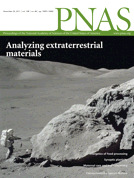
Dynamic Social Networks Promote Cooperation in Experiments with Humans (PNAS, 2011)
Abstract
Human populations are both highly cooperative and highly organized. Human interactions are not random but rather are structured in social networks. Importantly, ties in these networks often are dynamic, changing in response to the behavior of one's social partners. This dynamic structure permits an important form of conditional action that has been explored theoretically but has received little empirical attention: People can respond to the cooperation and defection of those around them by making or breaking network links. Here, we present experimental evidence of the power of using strategic link formation and dissolution, and the network modification it entails, to stabilize cooperation in sizable groups. Our experiments explore large-scale cooperation, where subjects’ cooperative actions are equally beneficial to all those with whom they interact. Consistent with previous research, we find that cooperation decays over time when social networks are shuffled randomly every round or are fixed across all rounds. We also find that, when networks are dynamic but are updated only infrequently, cooperation again fails. However, when subjects can update their network connections frequently, we see a qualitatively different outcome: Cooperation is maintained at a high level through network rewiring. Subjects preferentially break links with defectors and form new links with cooperators, creating an incentive to cooperate and leading to substantial changes in network structure. Our experiments confirm the predictions of a set of evolutionary game theoretic models and demonstrate the important role that dynamic social networks can play in supporting large-scale human cooperation.
Citation:
D. Rand, S. Arbesman, and N.A. Christakis, "Dynamic Social Networks Promote Cooperation in Experiments with Humans" PNAS: Proceedings of the National Academy of Sciences, 108 (48): 19193-19198 (November 2011); http://dx.doi.org/10.1073/pnas.1108243108